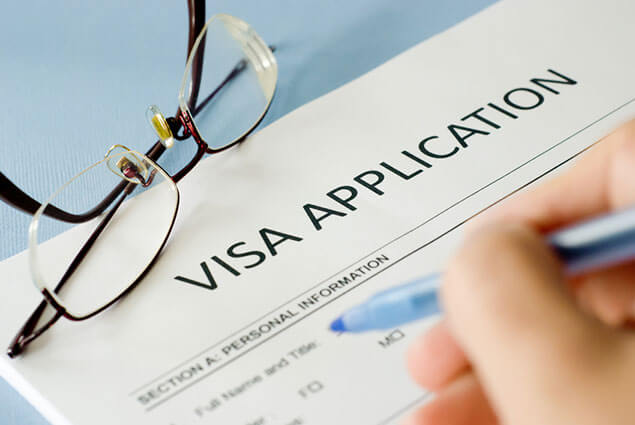
Sweeping Changes to the Subclass 457 program
(Andrew Woo MARN 1383628 at Taylor & Scott Lawyers discusses)
The government has introduced a set of new changes to the Temporary Work (Skilled) (subclass 457) visa program to address some concerns over the integrity of the program such as displacing the Australian workforce and exploitation of workers on 457 visas. So-called comprehensive package of reform to strike a balance between the interest of Australian workers and the need to strengthen protections for overseas workers has brought the following changes effective as of 1 July 2013:
-
Meeting the training benchmarks by a standard business sponsor is an ongoing and enforceable requirement. Otherwise, it will be a breach of the employer’s obligations. Previous sponsors must also ensure that the expenditure of training of Australian workers meets the training benchmarks during their sponsorship term when applying for a new sponsorship or varying the terms of their current sponsorship.
-
A delegate must satisfy himself or herself as to the genuiness of the nominated position and may refuse the application in the event that the tasks of the nominated occupation do not correspond to the tasks of an eligible occupation or the position associated with nominated occupation is not genuine.
-
The employer must indicate how many workers the employer will sponsor during the lifetime of the sponsorship as the employer is restricted to sponsoring the number of subclass 457 workers as approved in their sponsorship application over the term of their sponsorship. An application to vary the conditions of sponsorship, namely the number of workers can be made at a later stage.
-
The assessment of some generalist occupations has now been strengthened such that some workers with low skilled occupations may not be able to access the 457 program.
-
The employer should ensure that the nominated employee receives market salary rate of pay payable to other equivalent Australian workers not only within the same workplace but also in the same locality. If there is no equivalent worker, the employer is still required to satisfy the Department that the terms and conditions of employment are comparable to those that are common in that locality and industry.
-
The market salary rate assessment exemption has been increased to $250,000.00 from $180,000.00
-
Employees must now be employed by their sponsor in a direct employment relationship so on-hire arrangements resembling independent contracting arrangements are prohibited.
-
Sponsors must bear certain costs associated with becoming a sponsor and must not pass these costs onto a sponsored employee.
-
If a subclass 457 visa holder who was previously exempt from the English language requirement because their annual earnings are above the specified threshold, is renominated at a salary level lower than the ELSET, the visa holder will be required to demonstrate that they either meet the English language requirement or that they are otherwise exempt.
-
Only exemptions from the English language requirement available are when
-
a nominated salary is over the ELSET amount
-
the worker holds a passport from Canada, United States of America, United Kingdom, Republic of Ireland or New Zealand
-
the worker has completed at least 5 consecutive years of full-time study in a secondary and/or higher education institution where the instruction was delivered in English
-
The English language requirement is now aligned with the ENS. Occupational English Test score of B in each of the four test components will now also be accepted and the IELTS or OET must have been completed within 3 years prior to the date an application is lodged.
-
The term of sponsorship approval for start-up businesses has been amended to an initial 12 months and all subclass 457 visa holders sponsored by start-up businesses are limited to an initial 12 month visa.
-
The sponsored worker must commence work with the sponsor within 90 days of arriving in Australia
-
Upon grant of a 457 visa, the sponsored worker must seek within 28 days any mandatory registration, licence or membership for their occupation in the state or territory they are employed.
-
The time period for Subclass 457 visa holder to find a new sponsor or to depart Australia is extended to 90 consecutive days.
-
Fair Work Inspectors are able to exercise powers for the purposes of the Migration Act including investigation into compliance with the sponsorship obligations by the sponsor
-
One of the other new significant changes is re-introduction of Labour Market Testing (LMT) to the 457 visa program. This requirement will only apply to standard business sponsors who will be require to demonstrate that they have undertaken labour market testing in relation to the nominated position. The proof of labour market testing includes details of any advertising of the position commissioned by the approved sponsor and fees or expenses for that advertising. However, it has been foreshadowed that there will be some exemption for selected highly skilled occupations ANZSCO Level 1 or 2 occupations. This requirement to labour market test will most likely take effect in November 2013.
If you require professional expertise or advice to navigate through these changes into the 457 visa program, we are here to assist you. It is critical to obtain the right advice from the right person. Our team of experienced migration lawyers and registered migration agents will endeavour to deliver the best outcome.
ANDREW WOO (Registered Migration Agent No. 1383628)
Please insert photos of LNR and ASW
For more information, Contact Lachlan Riches (Registered Migration Agent No. 9473887) or Andrew Woo (Registered Migration Agent No. 1383628) on 1800 600 664 or complete the Contact Form on this page.
At Taylor & Scott “ We Care For You.”
